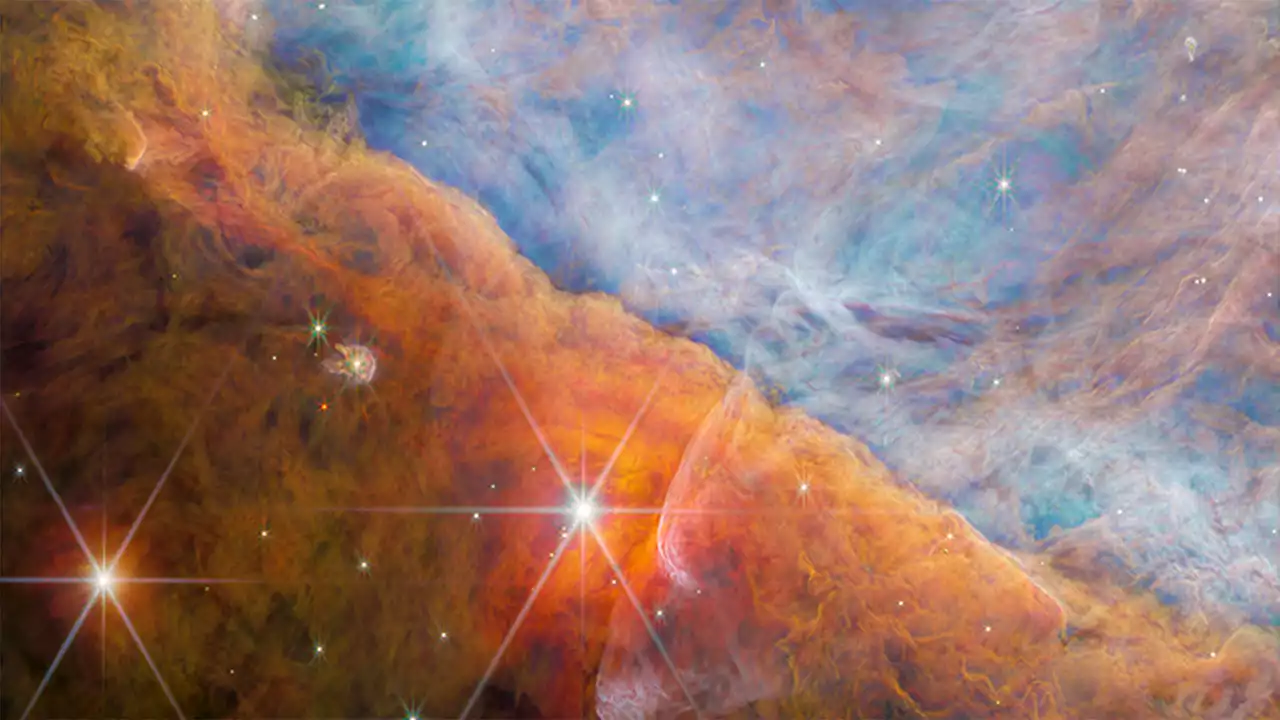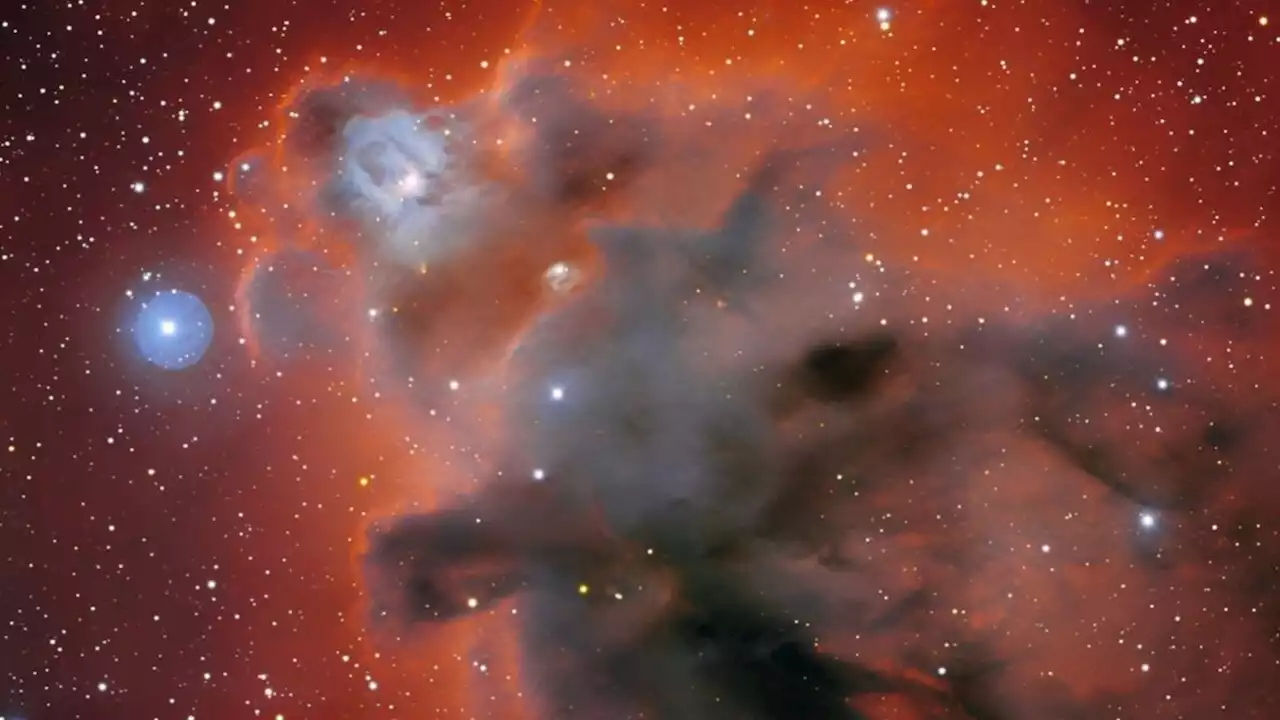The molecule, called methyl cation, is important for the development of the complex carbon-based molecules on which life depends.
The Orion Nebula is famous for its beauty, but it was also the site of a recent exciting scientific discovery. The James Webb Space Telescope has detected an important molecule in a planet-forming disk of debris within the nebula. The molecule, called methyl cation , is a carbon compound that is important for the formation of life and has never been observed in space before.
Webb studied a part of the nebula using its NIRCam and MIRI instruments, observing an area where bright young stars are being born and giving off ionizing radiation which makes nearby dust and gas glow beautifully. As well as making for a stunning image, the glow also allows spectroscopy instruments to study the chemical composition of the disk by splitting the light coming from it into wavelengths and seeing which wavelengths have been absorbed.
Recommended Videos Combining data from both instruments allowed scientists to identify the presence of methyl cation. This particular molecule is a key part of organic chemistry, as it helps other carbon-based molecules form. It was identified in a planet-forming disk around a small red dwarf star called d203-506, located 1350 light-years away. The system is young, and it experiences high levels of ultraviolet radiation from other nearby stars. And while ultraviolet radiation is often destructive to organic molecules, in this case, the radiation may actually have helped the methyl cation to form.
Related One theory is that energy from the radiation helps the molecule to form. The researchers also found that nearby disks which didn’t experience so much radiation had more water present, unlike the disk d203-506 which had no water. “This clearly shows that ultraviolet radiation can completely change the chemistry of a proto-planetary disc,” said lead author Olivier Berné of the University of Toulouse in a statement.
Malaysia Latest News, Malaysia Headlines
Similar News:You can also read news stories similar to this one that we have collected from other news sources.
James Webb Space Telescope could determine if nearby exoplanet is habitableWhat does it take to turn a habitable planet into a world more like Venus?
Read more »
 James Webb Space Telescope spots crucial carbon molecule for the first timeThe James Webb Space Telescope detected methyl cation, a crucial carbon molecule, for the first time, helping inform research on how life formed in the universe.
James Webb Space Telescope spots crucial carbon molecule for the first timeThe James Webb Space Telescope detected methyl cation, a crucial carbon molecule, for the first time, helping inform research on how life formed in the universe.
Read more »
![]() These Are James Webb Space Telescope's First Images of SaturnBehold! It's Saturn in all of its contrasty glory.
These Are James Webb Space Telescope's First Images of SaturnBehold! It's Saturn in all of its contrasty glory.
Read more »
JWST Discovers Crucial Carbon Molecule in The Orion NebulaDeep in the delicate traceries of the Orion Nebula, we've finally found an important carbon molecule never before seen in interstellar space.
Read more »
 Dark nebula dominates gorgeous new view of Orion constellation (photo)Dark, billowing clouds sweep across this stunning photo of a large star-forming area of the Orion constellation.
Dark nebula dominates gorgeous new view of Orion constellation (photo)Dark, billowing clouds sweep across this stunning photo of a large star-forming area of the Orion constellation.
Read more »
NASA’s Webb Telescope Cracks a 40-Year-Old Space MysteryThe James Webb Space Telescope does more than give us jaw-dropping pictures of the cosmos.
Read more »
